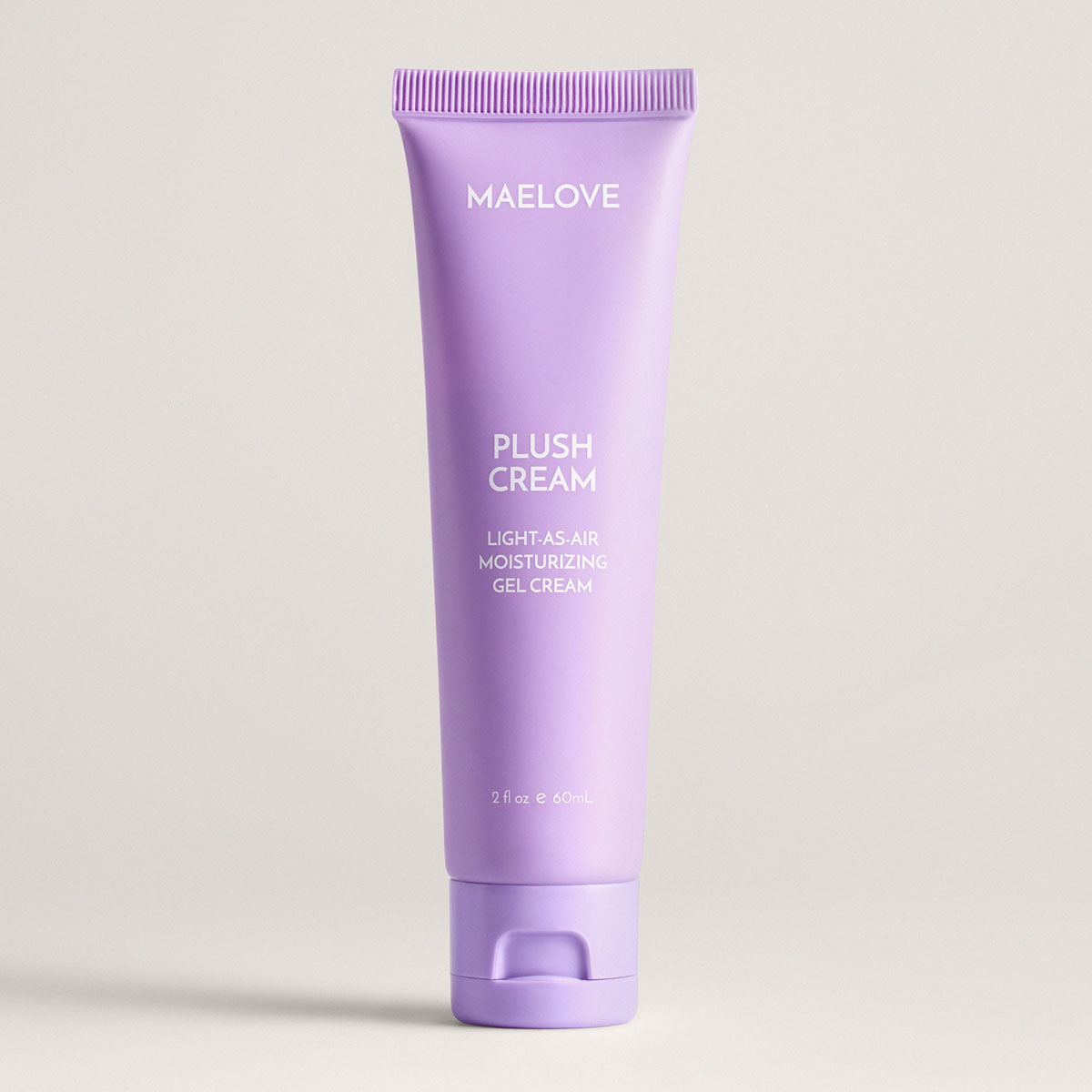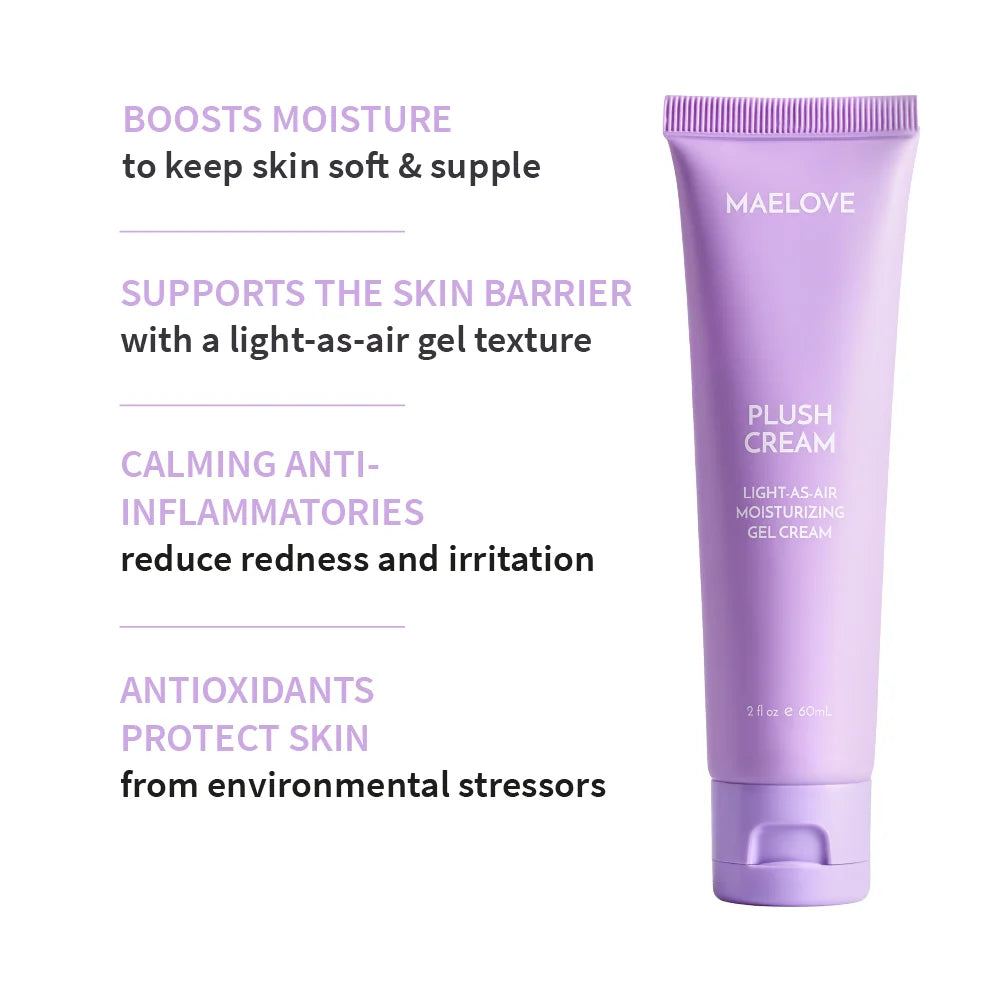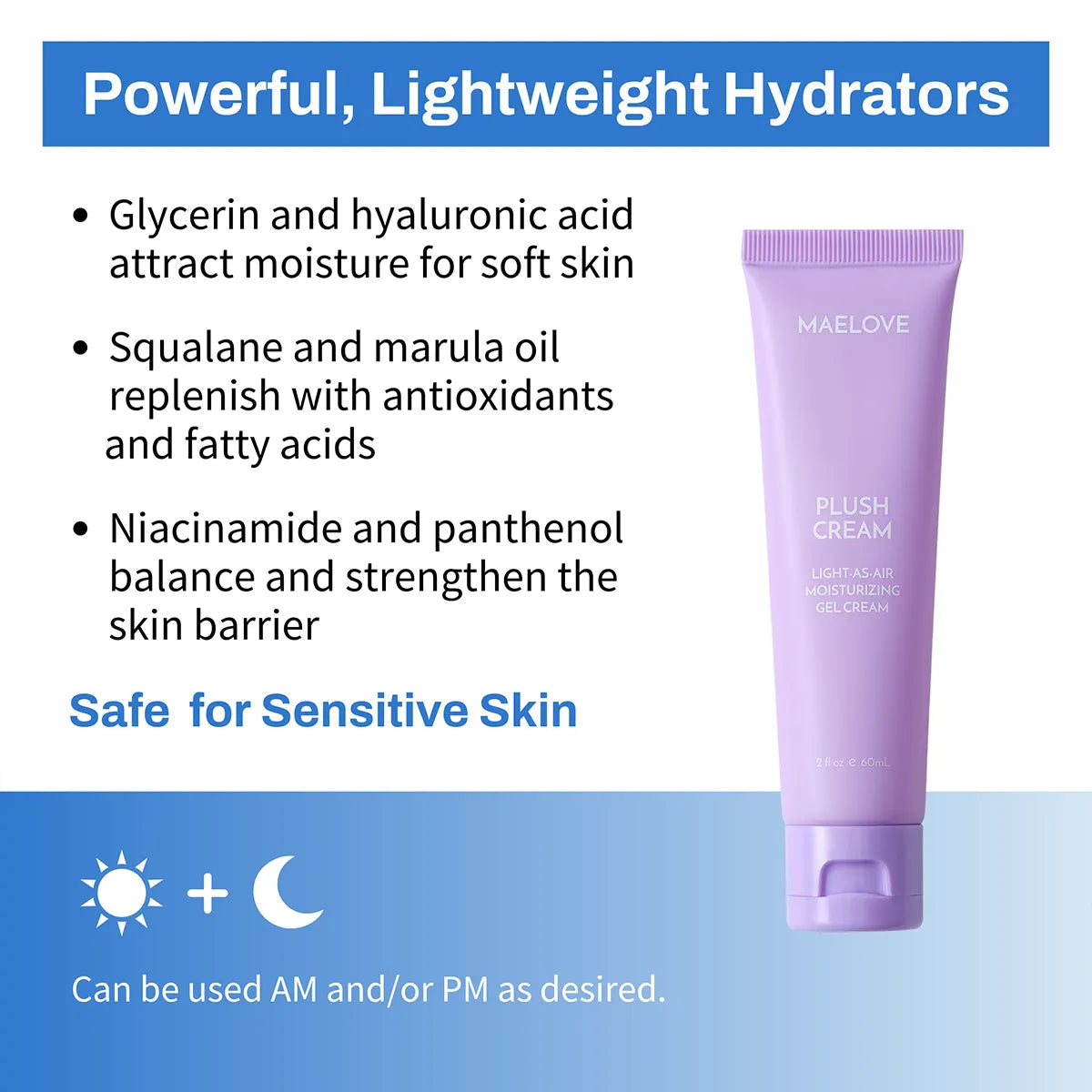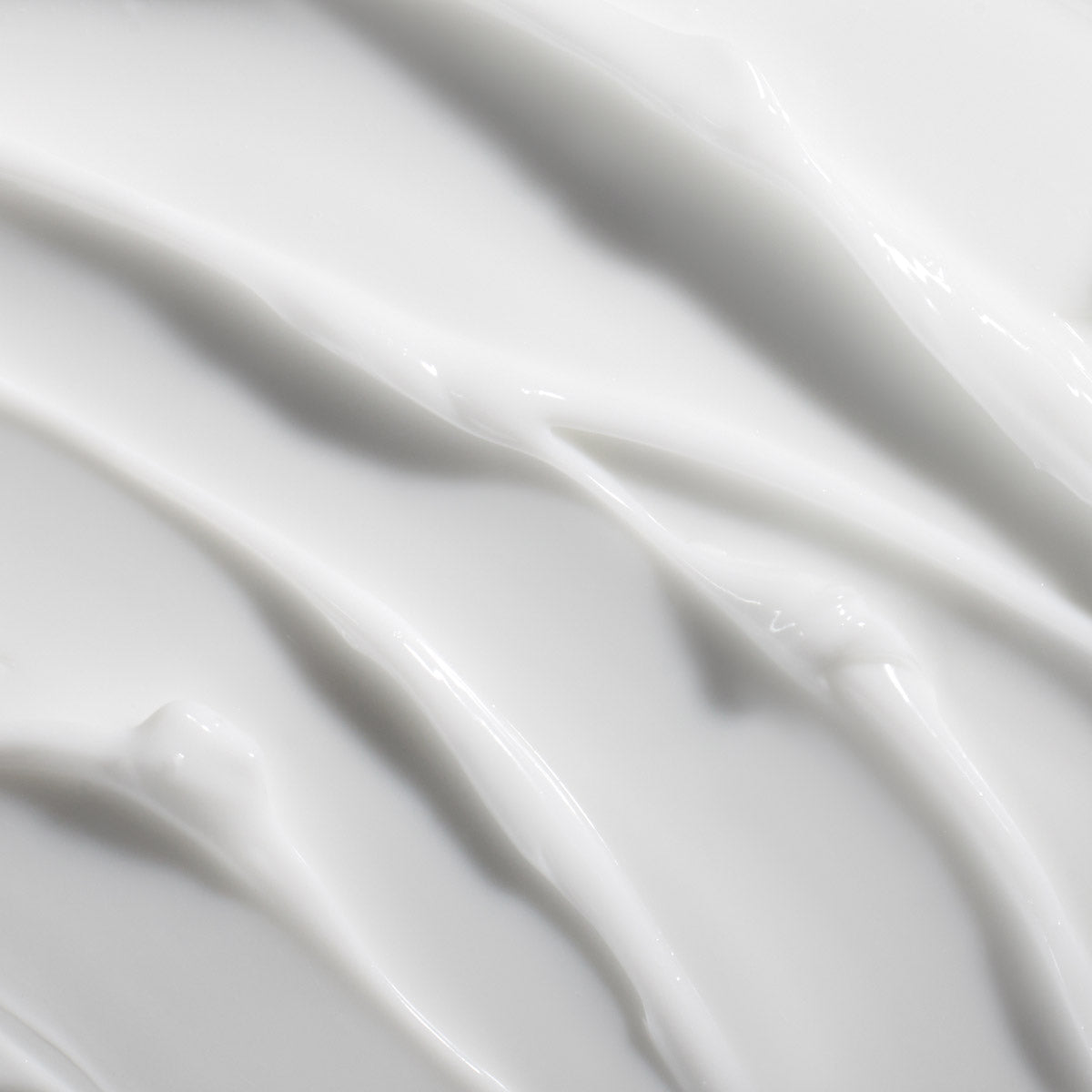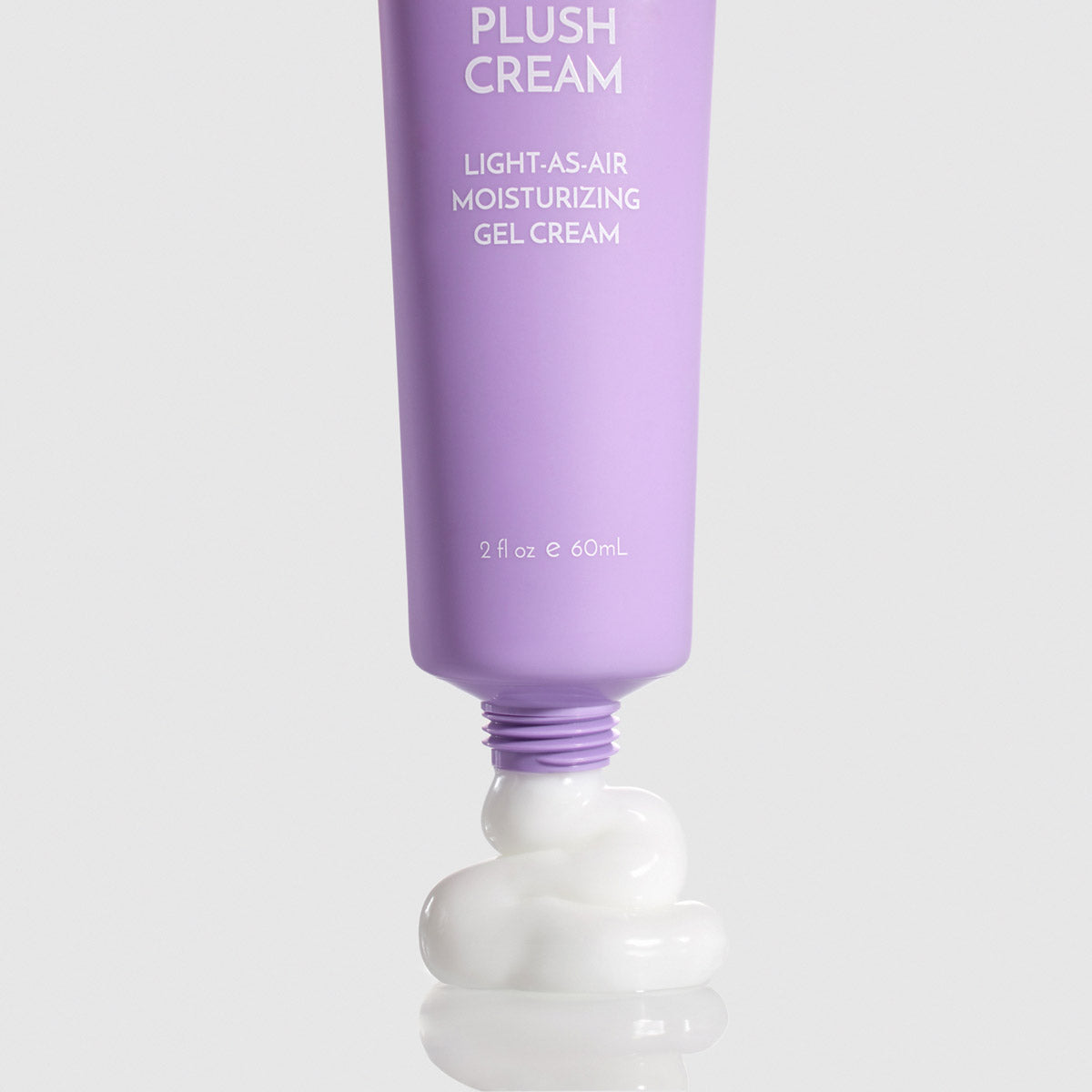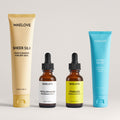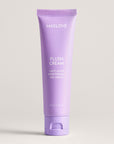
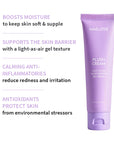
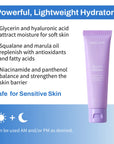
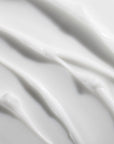
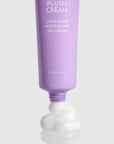

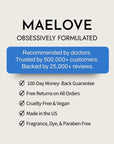
1000+ purchased in the last 30 days
Plush Cream Lightweight Moisturizer
Most orders are processed and shipped within two business days (Mon - Fri). You’ll receive an email with tracking details as soon as yours is on its way.
For US-based shoppers, shipping is on us for orders $50 and over. Anything less is a flat $6.95 charge.
100-Day Peace of Mind: Skincare is a journey, and we're with you. You have a full 100 days to try your products. If you aren't satisfied, returns are free and easy through our self-serve portal or a quick note to team@maelove.com
Here are results you can expect with consistent daily use.
Week 1:
- Your skin feels hydrated without grease, andmakeup goes on smoothly without pilling or sliding off.
Weeks 2 to 3:
- Oil production balances, and you stay matte 2-3 hours longer. Dry patches disappear.
- No new breakouts from clogged pores.
Weeks 4 and beyond:
- Redness calms as your skin barrier strengthens. Fine lines look softer from consistent hydration. Your skin stops the oily-then-dry cycle.


Plush Cream is light enough to not trigger more oil or clog pores, but hydrating enough that the skin doesn't over-react and produce too much sebum.
WEIGHTLESS HYDRATION (Hyaluronic Acid, Glycerin)
- Draws moisture deep into your skin to plump and smooth fine lines. You get a "quenched" look without the heavy film or clogged pores.
BARRIER REPAIR & CALM (Niacinamide, Panthenol, Bisabolol)
- Strengthens your natural defenses and quietens redness. This is your essential "buffer" to keep your skin resilient when using strong actives.
SMOOTHING SEAL (Squalane, Marula Oil, White Tea)
- Mimics your natural oils to lock in your serums. It leaves you with a velvety, "plush" finish that stays hydrated and plays perfectly under makeup.
full ingredient list in FAQ
Apply a thin layer to face and neck after serums, AM and/or PM.
Let serums absorb first, then smooth on and give it 60 seconds to sink in before SPF or makeup.
Best for oily, combo, or warm-weather routines.
Customer Reviews


For the Curious
All Maelove products are safety-tested for sensitive skin, made in the USA, vegan, cruelty-free, non-comedogenic, gluten-free, and free of parabens, phthalates, dyes, and artificial fragrances. We don't use ingredients that are banned in the EU or in the USA.
Water (Aqua), Glycerin, Undecane, Propanediol, Caprylic/Capric Triglyceride, Dicaprylyl Carbonate, Tridecane, Glyceryl Stearate, PEG 100 Stearate, Cetearyl Olivate, Sorbitan Olivate, Sclerocarya Birrea Seed (Marula) Oil, Squalane, Bisabolol, Niacinamide, Aloe Barbadensis Leaf Juice, Olea Europaea (Olive) Fruit Oil, Hyaluronic Acid, Panthenol, Palmitoyl Camellia Sinensis (White Tea) Extract, Algae Extract, Ethylhexylglycerin, Cetyl Alcohol, Sodium Polyacrylate, Phenoxyethanol
Moisturizing creams provide hydration and can smooth skin, but many find them hard to tolerate because they are greasy, heavy or pore clogging. Particularly in summer months, a heavy cream may have an unpleasant feel and may leave streaks with sweating. Further, heavy moisturizers are unnecessary in humid weather.
The solution to this dilemma is in light-as-air whipped creams that are formulated to disappear into the skin and leave a soft, matte finish. The Plush Cream is in this category of moisturizers but has further ambitions as well, sparing none of the luxuriousness of calming and skin-barrier supporting actives of the best anti-aging or specialty creams.
While many creams, even the most expensive, use fossil-fuel derived ingredients such as mineral oil or petroleum, this leads to negative properties that include pore-clogging, greasiness, and environment unfriendliness (Purnamawati et al. 2017). The Plush Cream opts instead to use natural and plant-based ingredients hyaluronic acid, squalane and marula oil that get the job done, but without clogging pores, or leaving a heavy feel.
Hyaluronic acid is considered one of the best humectants, which means it is “hygroscopic,” attracting water and holding onto it. In fact, it can hold 1000 times it’s weight in water! In humid conditions, it can take this water from the environment. It is called “nature’s moisturizer” in part because it is naturally found in the human skin as one of the main glycosaminoglycans of the dermis (Necas et al. 2008).
Humectants are combined with emollients and occlusives that can then prevent the water from evaporating (Purnamawati et al. 2017). Squalane functions as both an emollient and an occlusive. Squalene is a natural component of sebum and one of the most common lipids produced by human skin cells. The amount of squalene produced naturally by the body decreases drastically after age 30 contributing to dry skin with aging. Squalane is a saturated form of squalene that is less susceptible to oxidation making it an ideal choice for use in moisturizers. Further, it does not have an oily feel, is odorless, does not lead to acne, is antibacterial and safe for sensitive skin (Sethi et al. 2016).
Marula oil is from the nut of the African Sclerocarya birrea (Marula) tree and has been traditionally used by African peoples including the Zulu and Tsonga peoples for skincare for thousands of years. Marula oil contains saturated and unsaturated fatty acids including a high concentration of oleic acid, and also palmitic acid, linoleic acid, palmitoleic acid, and stearic acid. It has been shown to be non-irritating, moisturizing and hydrating as an emollient, and with occlusive properties (Komane et al. 2015).
Niacinamide (Vitamin B3) is one of the most well-studied and gold standard ingredients in moisturizers, and particularly in moisturizers that are anti-aging. It directly combats age-related declines in cofactors that are necessary for a strong skin barrier. In other words, it supports the long-term hydration of skin by helping kickstart the body’s natural skin barrier strengthening mechanisms that may have become faulty with aging (Matts et al. 2002).
Niacinamide has been shown to increase levels of skin barrier lipids such as ceramides, free fatty acids, and cholesterol and decrease trans-epidermal water loss (Tanno et al. 2008), as well as increase protein levels such as for collagen, keratin, fillaggrin, and involucrin that also experience age-related declines (Gehring 2004, Bissett et al. 2006). This is why Niacinamide can also combat fine lines and wrinkles (Bisset et al. 2006). Further, it can lead to long-term improvements in skin hydration which does not occur with moisturizers that do not contain niacinamide (Soma et al. 2005).
Panthenol (provitamin B5) is another excellent humectant. It is absorbed into the skin where it is converted into pantothenic acid which is hygroscopic. This is in part why panthenol is an excellent moisturizer. The other is that pantothenic acid is a constituent of coenzyme A which is a cofactor in the synthesis of fatty acids and sphingoplipids that strengthen the skin barrier (Proksh et al. 2017). It is one of the most time-tested ingredients in moisturizers shown in double-blind clinical trials conducted over several decades to be effective and safe at hydrating, repairing and restoring a damaged skin barrier (Proksch et al. 2017, Scott et al. 2022). Along with niacinamide, panthenol was found to have anti-inflammatory action as well and significantly reduce facial redness (Nisbet et al. 2019).
Yes you can. However, it is always advisable to double check your skincare products and ingredients with your doctor and follow their protocol.
Purnamawati S, Indrastuti N, Danarti R, Saefudin T (2017). “The Role of Moisturizers in Addressing Various Kinds of Dermatitis: A Review.” Clinical Medicine and Research 15(3-4): 75-87.
Komane B, Vermaak I, Summers B, Viljoen A (2015). “Safety and efficacy of Sclerocarya birrea (A. Rich) Hochst (Marula) oil: A clinical perspective.” Journal of Ethnopharmacology 176: 327-335.
Necas J, Bartosikova L, Brauner P, Kolar J (2008). “Hyaluronic acid (hyaluronan): a review.” Veterinarni Medicina 53(8): 397-411.
Purnamawati S, Indrastuti N, Danarti R, Saefudin T (2017). “The Role of Moisturizers in Addressing Various Kinds of Dermatitis: A Review.” Clinical Medicine and Research 15(3-4): 75-87.
Sethi A, Kaur T, Malhotra SK, Gambhir ML (2016). “Moisturizers: The Slippery Road.” Indian J Dermatol 61(3): 279-287.
Bissett DL, Oblong JE, Berge CA (2006). “Niacinamide: A B Vitamin that Improves Aging Facial Skin Appearance.” Dermatologic Surgery 31: 860-866
Gehring W (2004). “Nicotinic acid/ niacinamide and the skin.” J Cosmet Dermatol 3: 88-93.
Matts PJ, Oblong JE, Bissett DL (2002).“A review of the range of effects of niacinamide in human skin.” IFSCC5(4):285-289.
Nisbet SJ, Targett D, Rawlings AV, Qian K, Wang X, Lin CB, Thompson MA, Bulsara PA, Moore DJ (2019). “Clinical and in vitro evaluation of new anti-redness cosmetic products in subjects with winter xerosis and sensitive skin.’ Int J Cosmet Sci 41: 534-547.
Proksch E, de Bony R, Trapp S, Boudon S (2017). “Topical use of dexpanthenol: a 70th anniversary article.” J Dermatol Treatment 28(8): 766-773.
Scott LN, Fiume M, Bergfield WF, Belsito DV, Hill RA, Klaassen CD, Liebler DC, Marks Jr JG, Shank RC, Slaga TJ, Snyder PW, Heldreth B (2022). “Safety Assessment of Panthenol, Pantothenic Acid, and Derivatives as Used in Cosmetics.” Int J Toxicol 41(3_suppl): 77-128.
Soma Y, Kashima M, Imaizumi A, Takhama H, Kawakami T, Mizoguchi M (2005). “Moisturizing effects of topical nicotinamide on atopic dry skin.” Int J Dermatol 44: 197-202.
Tanno O, Ota Y, Kitamura N, Katsube T, Inoue S (2008). “Nicotinamide increases biosynthesis of ceramides as well as other stratum corneum lipids to improve the epidermal permeability barrier.” British J Dermatol 143(3): 524-531.

This writeup was lead-authored by our senior technical adviser, Sunbin Song, PhD. Sunbin graduated from MIT with a degree in Biology before receiving a doctorate in neuroscience from Georgetown and...
